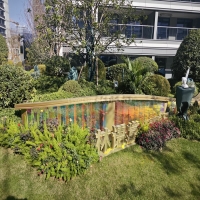Welcome to the website for landscape facilities products and knowledge.
What are the regulatory requirements for landscape tables in different countries or regions?
Landscape tables, essential for outdoor spaces, must adhere to varying regulatory standards depending on the country or region. These regulations often focus on safety, durability, and environmental impact.
In the United States, landscape tables must comply with ASTM International standards, particularly ASTM F1552 for outdoor furniture. These guidelines ensure structural stability, load-bearing capacity, and resistance to weathering. Additionally, California’s Proposition 65 may require labeling for materials containing harmful chemicals.
The European Union enforces stringent EN 581 standards, which include tests for mechanical strength, stability, and weather resistance. REACH regulations also mandate the restriction of hazardous substances like lead and phthalates in materials.
In Australia, the AS/NZS 4688 standard governs outdoor furniture, emphasizing slip resistance and corrosion protection, especially in coastal areas. Meanwhile, Japan follows the JIS S 1101 standard, prioritizing earthquake-resistant designs and non-toxic finishes.
Emerging markets like China and India are increasingly adopting international benchmarks, though local regulations may vary by province or state. Sustainable materials and fire-resistant coatings are becoming key focuses globally.
Understanding these requirements ensures compliance and enhances the safety and longevity of landscape tables in diverse environments. Manufacturers and buyers must stay informed to navigate these regulations effectively.
Related search:

Recommendation
Metal and acrylic color-changing combined curtain wall for large-scale public landscape facilities